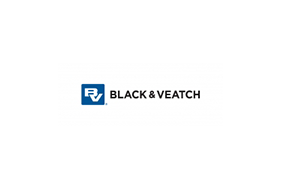Black & Veatch Perspective: Q&A with Dr. James Barnard
Reflecting on a Lifetime of Advancing Water Treatment Technology
Published 03-27-24
Submitted by Black & Veatch

By The Black & Veatch Insights Group
Known in the water treatment world as the “Father of BNR” – biological nutrient removal – Dr. James Barnard recently retired from Black & Veatch after a long, distinguished career as an expert in his field. Over the years, his numerous contributions included developing cutting-edge technologies to improve water quality and reduce pollution. The biological process he designed for removing nitrogen and phosphorus from used water facilities now are applied around the world. In this Q&A, Dr. Barnard shares his insights and reflections on his career, his accomplishments, and the future of water treatment technology.
What inspired you to focus your career on nutrient removal?
After finishing my Ph.D. at Vanderbilt in 1971, I returned to the National Water Research Institute in Pretoria (South Africa). The discovery of rich gold deposits more than a century ago resulted in a population of more than 12 million around Johannesburg on the continental divide and Pretoria only 35 miles to the north. This large population concentration at a high altitude where water was pumped from long distances to the emerging cities and while effluents were treated to high standards and returned to the reservoirs that also served as water supply, water treatment standards did not include nitrogen and phosphorus removal. This was causing severe eutrophication (i.e. algae growth oxygen depletion). When observing the green pea-soup overflowing one of these reservoirs, I decided to pursue biological means of removing these nutrients. At the time, practices like chemical treatment and stripping and ammonia were the standard. Biological treatment was still only lab scale.
What has been your proudest moment/accomplishment in your career?
This is difficult to say, but two moments stand out. The first is that the city of Johannesburg decided to apply the four-stage process that I developed in the laboratory for the 750,000 PE Goudkoppies Plant; the second was my discovery of biological phosphorus removal in a pilot plant, which Johannesburg also adopted during the construction of the plant. Many were to follow, such as receiving the Water Environment Federation Camp Award, the gold medal of the South African Academy of Science and Arts, the International Water Association Medal (handed over by Princess Anne), and other recognitions.
What excites you about where the industry is headed?
What excites me is how the latest findings are pointing at the possibility of biological nutrient removal (BNR) leading into producing rapid-settling granular sludge which could double the capacity of existing plants while increasing the rate of simultaneous nitrification and denitrification to also achieve very low total nitrogen levels. Then there is the possibility of combining suspended growth with attached growth to get even better results. Our Applied Research team has had some very promising results and I think Black & Veatch will be leading the industry in the future with this.
What advice do you have for your peers for the future challenges in the industry?
Be curious and, in the biological world, always remember that nothing happens without a reason. Keep asking 'why.' That's what I did. Whenever I saw something happening, I kept asking 'why' to understand the underlying reason.
What breakthroughs would you still most like to see?
One is tempted to say being energy neutral, but that depends a lot on the effluent requirement and geography. But recovery of resources should get preference. The energy that can be recovered especially in colder climates is considerable, and the recovery of nitrogen would be rewarding since the energy required to fix nitrogen from the atmosphere is very high. The one thing that I feel we should look at more is resource recovery, especially protein recovery from food waste and then naturally re-use of the final product.
What advice would you give to early-career engineers?
Again, be curious and question everything. Don’t just accept that what’s in the box is final.
Is there a particular moment you recall when you reflected in the moment and felt that you have helped you in Building a World of Difference?
There were a number of such instances, but the most recent is after I heard about the great performance of the upgraded Sacramento Regional Wastewater Treatment Plant. It was such a tight design with everything working so well. The facilities have all but eliminated ammonia and significantly reduced nitrogen in the discharge. Another was when I was honored with a Ph.D. from Iowa State University.
All of us at Black & Veatch would like to extend our sincere gratitude to Dr. James Barnard for sharing his valuable insights and expertise with our team and our clients these past 25 years. His contributions to the field of water treatment and pollution reduction have been immense and have helped transform the industry. His dedication and passion for improving water quality have inspired countless professionals to continue the work of advancing the field. We wish him all the best in his well-deserved retirement and know that his legacy will continue to inspire future generations of water treatment experts.

Black & Veatch
Black & Veatch
Black & Veatch is an employee-owned engineering, procurement, consulting and construction company with a more than 100-year track record of innovation in sustainable infrastructure. Since 1915, we have helped our clients improve the lives of people in over 100 countries through consulting, engineering, construction, operations and program management. Our revenues in 2018 were US$3.5 billion. Follow us on www.bv.com and in social media.
More from Black & Veatch

